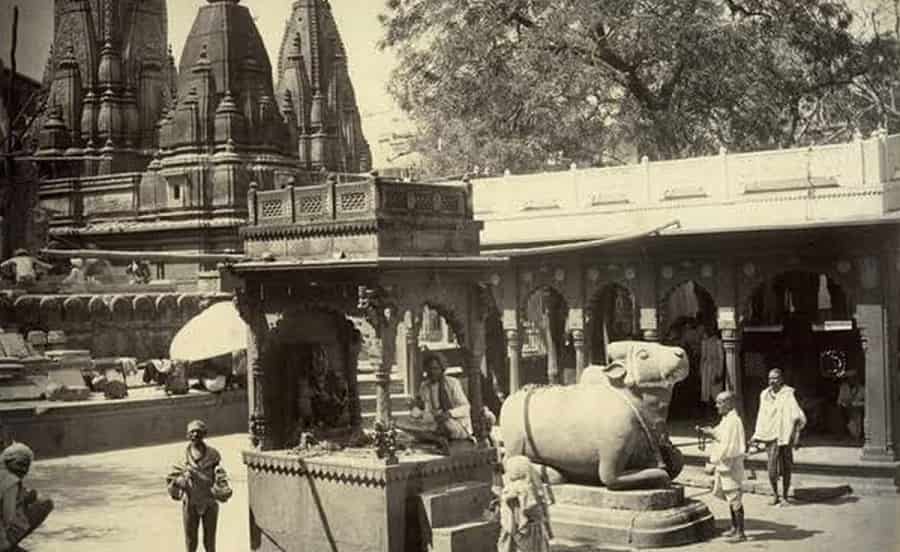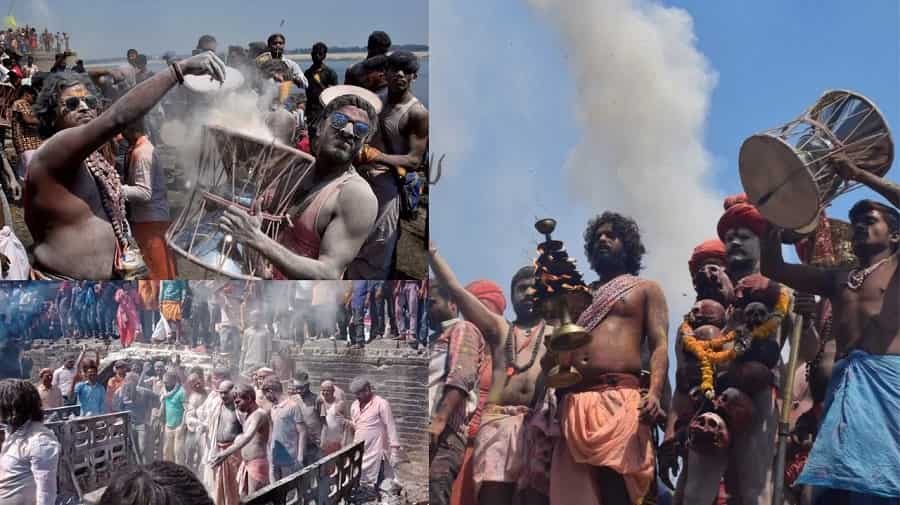The Kashi Vishwanath Temple, also known as the Golden Temple, is one of the most revered and ancient Hindu temples in India. Situated in the holy city of Varanasi, it stands as a testament to the rich spiritual and cultural heritage of India. With a history spanning over several millennia, this temple has witnessed the rise and fall of empires, the ebb and flow of pilgrims, and the enduring devotion of countless worshippers.
In this comprehensive exploration, we will delve deep into the history of the Kashi Vishwanath Temple, tracing its origins, evolution, and significance in the Hindu faith. This journey will not only reveal the architectural marvel of the temple but also highlight its spiritual and cultural importance.

The Origin of Kashi Vishwanath Temple
The origins of the Kashi Vishwanath Temple can be traced back to ancient times, and its history is intertwined with the legendary city of Varanasi, also known as Kashi or Benares. Kashi, one of the seven holiest cities in Hinduism, is considered the abode of Lord Shiva, the destroyer and transformer of the universe.
The temple’s history is said to date back to the time immemorial, and it is mentioned in various Hindu scriptures, including the Skanda Purana and the Kashi Khanda. According to legend, Lord Shiva himself established the Jyotirlinga, a sacred representation of his formless lingam (phallus), at this location. This Jyotirlinga is believed to be the embodiment of divine power, and it draws devotees from all corners of the world.
The original temple was constructed by a devotee named King Harishchandra in ancient times. Over the centuries, it underwent several reconstructions and renovations, reflecting the changing architectural styles and religious practices of different eras.
The Temple’s Architecture
The Kashi Vishwanath Temple is a fine example of the Nagara style of temple architecture, characterized by its towering spire (shikhara) and intricately carved stone facades. The temple complex is a blend of various architectural elements, with the main shrine dedicated to Lord Shiva. The temple’s sanctum sanctorum houses the revered Jyotirlinga of Lord Vishwanath.
The temple’s exterior is adorned with exquisite carvings, depicting scenes from Hindu mythology, celestial beings, and intricate floral motifs. The intricate artwork on the temple walls is a testament to the craftsmanship of ancient Indian artisans.
Suggested Tour:
Significance in Hinduism
The Kashi Vishwanath Temple holds immense spiritual significance in Hinduism. It is believed that a pilgrimage to this sacred site washes away one’s sins and grants salvation (moksha). Devotees come from far and wide to offer their prayers and seek the blessings of Lord Shiva.
The temple is an integral part of the Char Dham Yatra, which encompasses four sacred pilgrimage sites in India. The other three are Badrinath, Dwarka, and Puri. Pilgrims aspire to visit all four dhams to attain spiritual fulfillment.
Mythology & Legends
The Kashi Vishwanath Temple is steeped in mythology and legends that have captivated devotees and visitors for centuries. These stories not only add to the temple’s mystique but also provide a deeper understanding of its spiritual significance. Let’s explore some of the most prominent myths and legends associated with this revered temple.

The Legend of Lord Shiva’s Appearance: The central deity of the Kashi Vishwanath Temple is Lord Shiva, often referred to as Vishwanath or Vishveshvara, which means the “Ruler of the Universe.” According to Hindu mythology, Lord Shiva manifested in Varanasi to bless the city and its inhabitants. It is believed that His presence here makes Varanasi a sacred place where salvation (moksha) can be attained.
The Jyotirlinga Legend: One of the most significant legends surrounding the temple is the story of the Jyotirlinga. A Jyotirlinga is a sacred representation of Lord Shiva in the form of a radiant lingam (phallus). According to the Skanda Purana, Lord Vishwanath himself established the Jyotirlinga in Varanasi, making it one of the twelve Jyotirlingas in India. The Jyotirlinga represents the eternal nature of Lord Shiva and attracts countless pilgrims seeking divine blessings.
The Legend of Kaal Bhairav: Kaal Bhairav, an incarnation of Lord Shiva, is believed to be the guardian deity of Varanasi and the Kashi Vishwanath Temple. It is said that Kaal Bhairav ensures that no one can enter Varanasi with impure intentions. Legend has it that Kaal Bhairav cut off one of Lord Brahma’s five heads as a punishment for his arrogance, thus signifying the supremacy of Lord Shiva.
The Legend of Annapurna Devi: Adjacent to the Kashi Vishwanath Temple is the Annapurna Temple, dedicated to the goddess of nourishment, Annapurna Devi. According to mythology, Lord Shiva and Goddess Parvati once had a playful argument about the importance of sustenance. To demonstrate her point, Goddess Parvati disappeared, causing the entire world to suffer from hunger. In response, Lord Shiva took the form of a beggar and visited Varanasi. Here, Goddess Annapurna fed Him, and in gratitude, Lord Shiva promised that poverty would never befall Varanasi.
The Legend of King Harishchandra: King Harishchandra, known for his unwavering commitment to truth and justice, is believed to have constructed the original Kashi Vishwanath Temple. His story of sacrifice, as depicted in the Harishchandra Ghat of Varanasi, is closely associated with the temple’s history. It is said that the king lost his kingdom, family, and wealth due to his adherence to truth but eventually regained his kingdom with the blessings of Lord Vishwanath.
The Tale of Rani Ahilyabai Holkar: In the 18th century, Queen Ahilyabai Holkar of Indore played a pivotal role in the temple’s reconstruction. It is said that she was a devout devotee of Lord Shiva and, upon hearing about the temple’s dilapidated state, decided to rebuild it. Her contributions not only restored the temple but also enhanced its architectural grandeur.
The Eternal Connection of Varanasi: Varanasi itself is steeped in mythology, with numerous legends associated with the city’s sacredness. It is often referred to as the “City of Lord Shiva” and is believed to be the place where Lord Shiva performed the cosmic dance of destruction, known as the Tandava. The city’s association with the Ganges River, which is considered a sacred river in Hinduism, adds to its divine significance.
- Suggested Tour: Varanasi Temple Tour Package
Historical Evolution
The history of the Kashi Vishwanath Temple is marked by various stages of construction, destruction, and reconstruction due to a series of invasions, conflicts, and natural calamities. The temple’s resilience and enduring spiritual significance have allowed it to rise from the ashes multiple times, reflecting the indomitable spirit of Hindu devotion.
Ancient Origins: As mentioned earlier, the temple’s origins date back to ancient times when it was established by King Harishchandra. The temple was a simple structure during this period but held great religious significance.
Destruction by Invaders: The temple faced its first major threat during the invasion of Mahmud of Ghazni in the 11th century. Mahmud, an Islamic conqueror, looted and destroyed several temples in northern India, including the Kashi Vishwanath Temple. This marked the beginning of a tumultuous period in the temple’s history.
Rebuilding by Kings: Despite the destruction, various Hindu kings and rulers of the region, including the Marathas, the Mughals, and the Rajputs, made efforts to rebuild and restore the temple over the centuries. The temple underwent numerous renovations and expansions during this time, each contributing to its architectural grandeur.
Aurangzeb’s Destruction: One of the most significant events in the temple’s history occurred during the reign of the Mughal emperor Aurangzeb in the late 17th century. Aurangzeb ordered the demolition of the Kashi Vishwanath Temple and the construction of a mosque in its place, which came to be known as the Gyanvapi Mosque. The temple’s original Jyotirlinga was shifted to a temporary location to protect it from destruction.
Re-establishment and Reclamation: The period following Aurangzeb’s rule saw concerted efforts by devout Hindus to re-establish the temple at its original location. The current temple complex, as it stands today, was built in the 18th century by Queen Ahilyabai Holkar of Indore. It is worth noting that Ahilyabai Holkar was a prominent ruler known for her contributions to temple construction and Hindu revivalism.
The temple’s current location is adjacent to the Gyanvapi Mosque, which remains a topic of religious and political debate to this day. Despite these controversies, the Kashi Vishwanath Temple has continued to thrive as a symbol of faith and devotion.
Modern Restoration and Conservation: In recent times, various restoration and conservation efforts have been undertaken to preserve the temple’s architectural and cultural heritage. These initiatives aim to protect the temple from environmental factors and ensure its longevity for future generations of devotees.
Impact on Indian Culture
The Kashi Vishwanath Temple has had a profound impact on Indian culture and spirituality. It serves as a symbol of the enduring nature of Hinduism and its ability to adapt and thrive despite challenges. The temple has also played a role in the development of Varanasi as a center of learning, culture, and spirituality.
The city of Varanasi, in which the temple is located, is considered one of the oldest continuously inhabited cities in the world. It has been a hub for scholars, artists, and seekers of spiritual wisdom for centuries. The temple’s presence has contributed significantly to Varanasi’s reputation as a city of learning and enlightenment.
Challenges and Controversies
Throughout its long history, the Kashi Vishwanath Temple has faced various challenges and controversies. Some of the key issues include:
Religious Conflicts: The presence of the Gyanvapi Mosque adjacent to the temple has been a source of religious tension and legal disputes. Hindu devotees have advocated for the temple’s complete reclamation, while Muslim groups have opposed any changes to the status quo.
Environmental Concerns: The temple is located in an area prone to flooding, and the rising water levels of the Ganges River pose a threat to the temple’s structural integrity. Conservation efforts are ongoing to mitigate these risks.
Crowd Management: The temple attracts a large number of pilgrims and tourists daily, leading to issues related to crowd management, security, and infrastructure. Efforts are made to improve facilities and streamline the visitor experience.
Conclusion
The Kashi Vishwanath Temple in Varanasi stands as a testament to the enduring faith and cultural richness of India. Its history, marked by destruction and reconstruction, reflects the unwavering devotion of countless worshippers over the centuries. This sacred site continues to inspire pilgrims, scholars, and artists, making it a focal point of India’s spiritual and cultural heritage.
As the temple evolves to meet the challenges of the modern world, it remains a symbol of the timeless connection between the divine and the human spirit, drawing people from all walks of life to seek solace, enlightenment, and salvation in the heart of Varanasi.
Suggested to Read:Â

 Call
Call WhatsApp
WhatsApp Enquiry
Enquiry